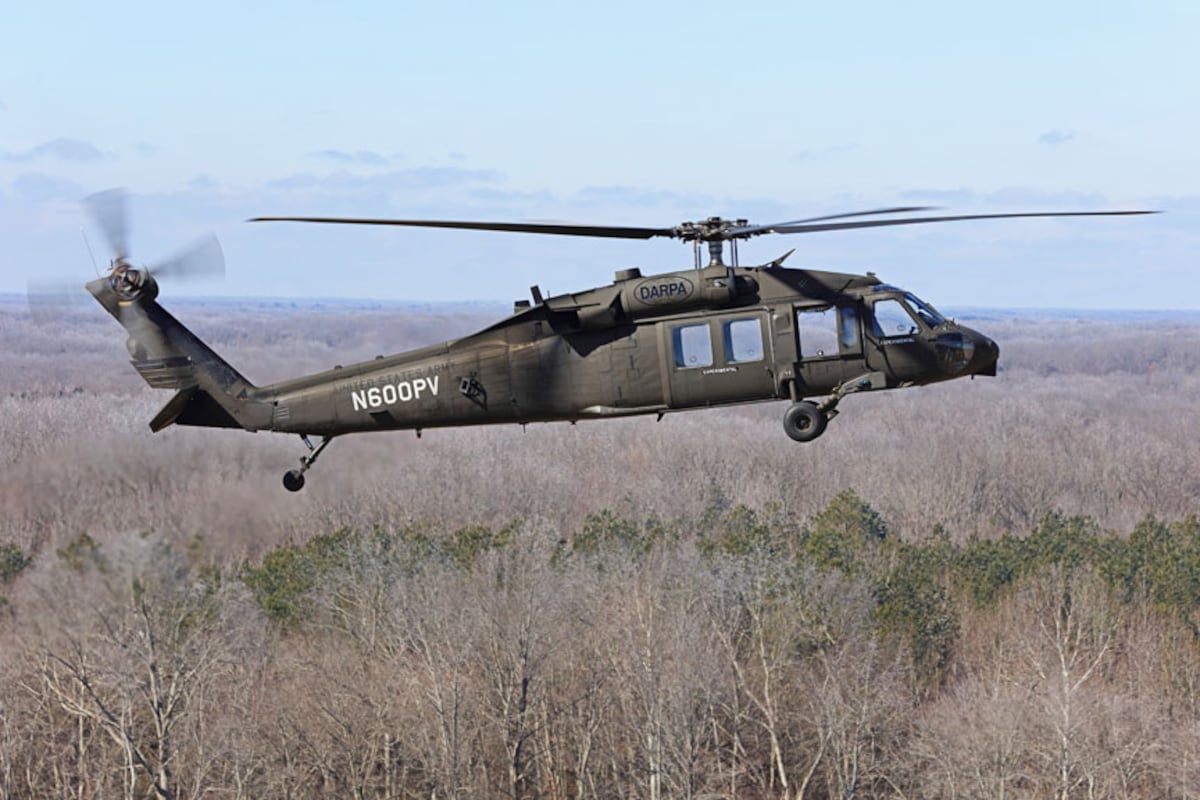Discovering the Thrills and Innovations of the Blackhawk Helicopter
The Blackhawk helicopter stands as a testament to military aeronautics's advancement, merging technological innovations with functional applications. What lies ahead for this iconic aircraft, and just how will arising technologies shape its future in army procedures?
Background of the Blackhawk Helicopter
Because its inception in the 1960s, the Blackhawk helicopter has actually played an essential function in modern military aviation. Created by Sikorsky Airplane, the UH-60 Blackhawk was made to fulfill the united state Army's requirement for a functional energy helicopter efficient in carrying out a selection of goals, consisting of army transport, clinical discharge, and cargo airlift. The style was a response to the restrictions of earlier helicopters, particularly in regards to survivability, maneuverability, and rate.
The Blackhawk made its initial flight in 1974 and quickly got in service in 1979. Its introduction marked a substantial development in helicopter technology, including a two-rotor system that enhanced efficiency and stability. The aircraft's rugged building and construction and progressed avionics enabled it to run efficiently in diverse settings and problems.
Throughout the years, the Blackhawk has been continuously updated, incorporating lessons found out from numerous combat scenarios. Its release in disputes such as the Gulf Battle, Somalia, and the Battle on Fear further solidified its reputation as an indispensable asset. The Blackhawk's heritage is characterized by its adaptability and durability, making it a foundation of military aeronautics for years.
Trick Functions and Requirements
The Blackhawk helicopter is identified by its robust style and advanced technical features, which jointly boost its functional abilities. Developed mostly for utility objectives, the Blackhawk flaunts a maximum launch weight of approximately 22,000 extra pounds, permitting it to carry significant hauls while preserving dexterity.
Furnished with 2 General Electric T700-GE-701C engines, the Blackhawk attains a maximum rate of around 183 knots and a series of 368 nautical miles - Blackhawk Helicopter. Its advanced blades system features a four-blade primary blades and a four-blade tail rotor, guaranteeing stability and maneuverability in different flying problems
The helicopter's cabin can accommodate up to 11 troops or various cargo setups, showcasing convenience in mission accounts. Furthermore, the Blackhawk is developed with innovative avionics, including electronic trip controls and a comprehensive cockpit display, boosting pilot situational understanding.
For boosted survivability, the Blackhawk includes ballistic armor and self-sealing gas storage tanks. Its capacity to run in varied atmospheres, from deserts to icy terrains, further strengthens its credibility as a dependable platform for humanitarian and military procedures alike. The Blackhawk's mix of durability, convenience, and power makes it a cornerstone of modern aerial abilities.
Developments in Technology
Technologies in innovation have significantly enhanced the abilities of the Blackhawk helicopter, guaranteeing it remains at the forefront of armed forces aviation. Among the most significant developments is the assimilation of sophisticated avionics systems, which provide boosted situational recognition through real-time data handling and screen. This innovation allows pilots to browse complex environments better, improving objective success rates.

Moreover, the introduction of digital fly-by-wire systems Homepage has actually revolutionized the control mechanisms of the Blackhawk, giving smoother handling and enhanced responsiveness. Collectively, these technical innovations make certain that the Blackhawk helicopter remains an essential asset in modern military procedures.
Functions in Armed Force Operations
With advanced innovation boosting its capabilities, the Blackhawk helicopter plays a complex role in military operations. Largely, it is utilized for army transportation, making it possible for rapid implementation and removal of personnel in numerous combat circumstances. Its large cabin can suit as much as 11 troops, making it an essential property for unique procedures and large-scale objectives.
Furthermore, the Blackhawk offers as a medevac platform, outfitted to transfer wounded soldiers rapidly and effectively from the field of battle to go medical facilities - Blackhawk Helicopter. Its convenience includes logistical assistance, where it carries materials and tools essential for sustaining armed forces procedures in remote areas

The helicopter is likewise instrumental in reconnaissance objectives, giving aerial surveillance and intelligence-gathering capacities. Its capacity to operate in varied environments-- ranging from city setups to extreme surfaces-- more strengthens its significance on the battlefield.
Additionally, the Blackhawk can be equipped with innovative weaponry, enabling it to involve in combat and give close air support. This adaptability underscores the helicopter's essential duty in contemporary military methods, making it an essential part of militaries worldwide.
Future Dopes and Innovations
Advancements in technology guarantee to usher in a brand-new era for the Blackhawk helicopter, boosting its abilities and functional performance. Future growths for the Blackhawk might consist of enhancements in avionics, such as sophisticated flight control systems and boosted situational understanding devices powered by artificial knowledge.
Furthermore, the assimilation of unmanned systems is on the horizon, potentially enabling manned-unmanned teaming procedures that can broaden goal accounts and minimize risk to employees. The Blackhawk's design is likewise anticipated to incorporate lighter and stronger products, enhancing fuel effectiveness and total efficiency.

Conclusion
In verdict, the Blackhawk helicopter stands for a significant achievement in army aviation, characterized by its adaptability and progressed technological features. Its historic evolution reflects a continual response to operational needs, improving capacities in different duties such as troop transportation and medevac operations. Continuous advancements, including the combination of synthetic intelligence and hybrid-electric propulsion, guarantee to more enhance the Blackhawk's efficiency and importance in future armed forces interactions, guaranteeing its standing as a necessary asset on the combat zone.

With sophisticated technology improving its capabilities, the Blackhawk helicopter plays a multifaceted function in military procedures. (Blackhawk Helicopter)